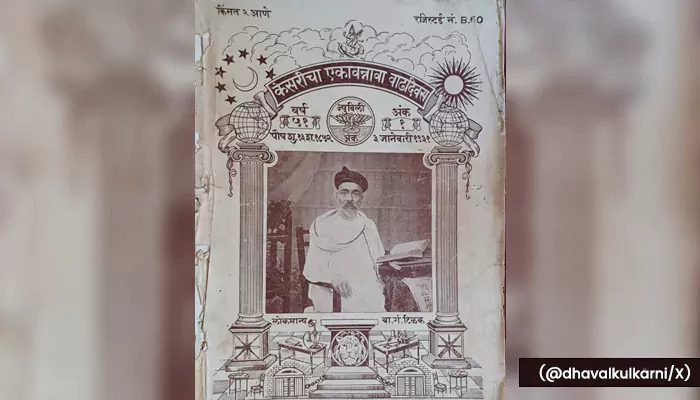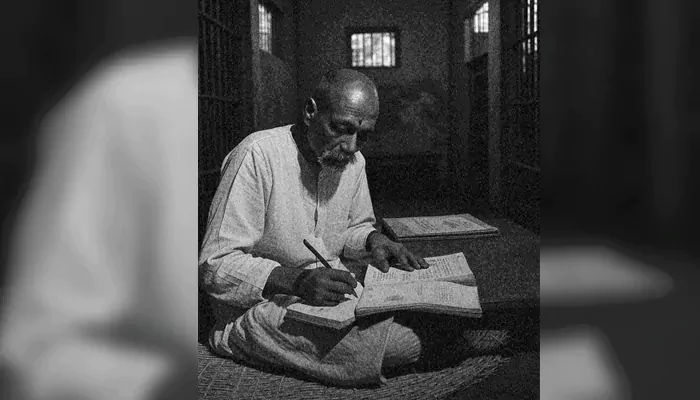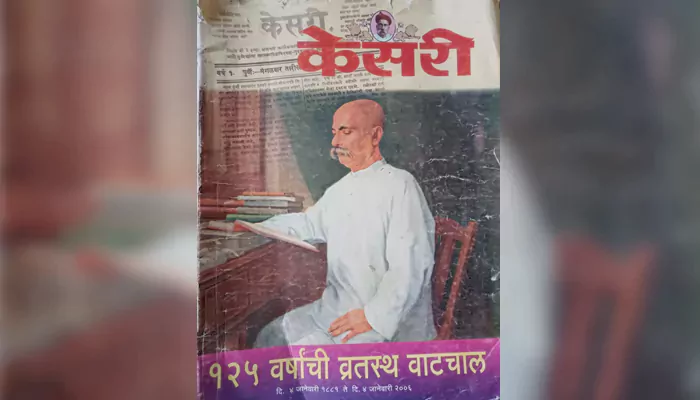
When a newspaper roared louder than cannons, and one man’s inkwell became the British Empire’s biggest headache.
What was the scenario of India in the late 1800s? Well, the British Raj felt pretty secure. Enter Bal Gangadhar Tilak - scholar, firebrand, and a man who understood the power of the printed word like nobody else. In 1881, he didn’t just start a newspaper; he unleashed a lion. Literally. Kesari means lion in Marathi, and wow, did it live up to its name.
This wasn't your average news sheet. Forget polite requests. Kesari, written in Marathi for the common people, became the heartbeat of a growing resistance. Tilak knew freedom wouldn't be won by whispers in elite clubs; it needed a mighty roar that reached every village and factory floor. And roar it did.
1881 :: Newspapers Founded by Bal Gangadhar Tilak
— indianhistorypics (@IndiaHistorypic) July 23, 2024
1) Kesari
2) Mahratta pic.twitter.com/e3CKI1d0IZ
Kesari and Maharatta Newspapers Founded by Bal Gangadhar Tilak
(@IndiaHistorypic/X)
Kesari was Tilak’s megaphone. He used it brilliantly:
Blistering Editorials
Forget dry reporting. Tilak’s pen dripped fire. He exposed British exploitation, railed against unfair laws (like the Age of Consent Act), and championed swaraj (self-rule) not as a distant dream, but as an urgent birthright. He spoke directly to the farmer, the worker, the student - in language that stirred their souls.
Satirical Cartoons that Stung
Kesari Wada holds immense importance in our nation’s history. This is the very place which was home to Lokmanya Bal Gangadhar Tilak- Indian nationalist, journalist, teacher, social reformer, lawyer & Independence activist.. the first leader of the Indian Independence Movement 1/3 pic.twitter.com/WkZVNh26ka
— manish pimpley (@manishbytes) January 30, 2022
(@manishbytes/X)
Oh, these were geniuses! Complex political ideas became instantly understandable through sharp, often hilarious, cartoons. British officials were lampooned, policies ridiculed. Imagine seeing the mighty Viceroy depicted as a bumbling fool – it was revolutionary (and risky!).
Cultural Awakening
Tilak brilliantly linked politics with culture. He transformed local festivals like Ganesh Chaturthi and Shivaji Jayanti into massive public gatherings. Kesari was the bulletin board, announcing these events and infusing them with patriotic fervor. It wasn't just protest; it was nation-building from the ground up.
Naturally, the British authorities hated Kesari. It was awakening a sleeping giant. They tried the usual tactics: warnings, fines, legal pressure. But Tilak wouldn’t back down. His defiance was the paper’s very soul.
The Raj’s ultimate weapon? Sedition charges. They hit Tilak not once, but twice, landing him in prison for years:
1897: Following the tragic assassination of a British plague commissioner by the Chapekar brothers, the Raj desperately looked for a scapegoat. Tilak’s fiery articles condemning plague mismanagement became the excuse. Despite a dodgy trial, he was sentenced to 18 months in prison. Think that silenced him? Never.
1908: The spark this time? The daring actions of young revolutionaries like Khudiram Bose. Kesari’s support for their spirit (if not always their methods) was the final straw for a terrified Raj. Tilak was charged again. This time, the sentence was brutal: six years of hard labour in Mandalay, Burma.
In 1908, the British convicted Tilak of sedition. He told the court: "There are higher powers that rule the destinies of men and nations, and I think it may be the will of Providence that the cause I represent may be benefited more by my suffering than by my pen and tongue." 🇮🇳 pic.twitter.com/MQ6npfSyp8
— Ajit Pai (@AjitPai) July 23, 2020
In 1908, the British government convicted Tilak of Sedition
(@AjitPai/X)

While imprisoned in Mandalay, Burma, Tilak wrote the book “Gita Rahasya” (1908)
(@grok/X)
Here’s the twist the British never saw coming: Throwing Tilak in jail backfired spectacularly. Instead of crushing dissent, it amplified it.
Martyrdom Magic
Each arrest, each trial, turned Tilak into a national hero. People saw a respected leader jailed simply for speaking the truth. His courage became legendary.
Kesari Grew Wings
Far from shutting down, Kesari became a sacred symbol. Copies were passed hand-to-hand, read aloud in groups. Tilak’s imprisonment proved everything the paper said about British injustice. Its readership and influence exploded.
Mass Protests Ignite
News of Tilak’s arrests sparked unprecedented anger. Workers went on strike in Bombay (Mumbai), students boycotted classes, shops shut down across Western India. It was raw, powerful public fury, directly fueled by Kesari’s message and Tilak’s sacrifice.

(@dhavalkulkarni/X)
Kesari did more than report news; it created it. Its fearless stance:
Galvanized the Masses
It moved the freedom struggle beyond intellectuals, making it a truly popular movement. Farmers and labourers saw their struggles reflected and politicized.
Defined Radical Nationalism
Tilak, through Kesari, became the undisputed leader of the "Extremist" wing in Congress. His famous declaration, "Swaraj is my birthright, and I shall have it!" (first powerfully articulated in Kesari), became the battle cry for a generation.
Proved the Power of Press
Despite repression, Kesari showed that a free press was an unstoppable force against tyranny. It inspired countless other nationalist publications.
Tilak served his harsh sentence in Mandalay, emerging physically weakened in 1914, but his spirit and Kesari's influence remained unbroken. He continued the fight until his death in 1920. And Kesari? It kept roaring.
The legacy? It’s immense. Kesari wasn't just a newspaper; it was the voice of a nation finding its courage. Tilak, facing down sedition charges and years in prison, proved that truth spoken fearlessly could shake an empire. He showed that sometimes, the most powerful weapon isn't a gun, but a well-inked press and a spine of steel.
The lion's roar from 1881 still echoes in the story of India’s freedom - a reminder that the pen, wielded with conviction, truly can be mightier than the sword. Today, Kesari still publishes.